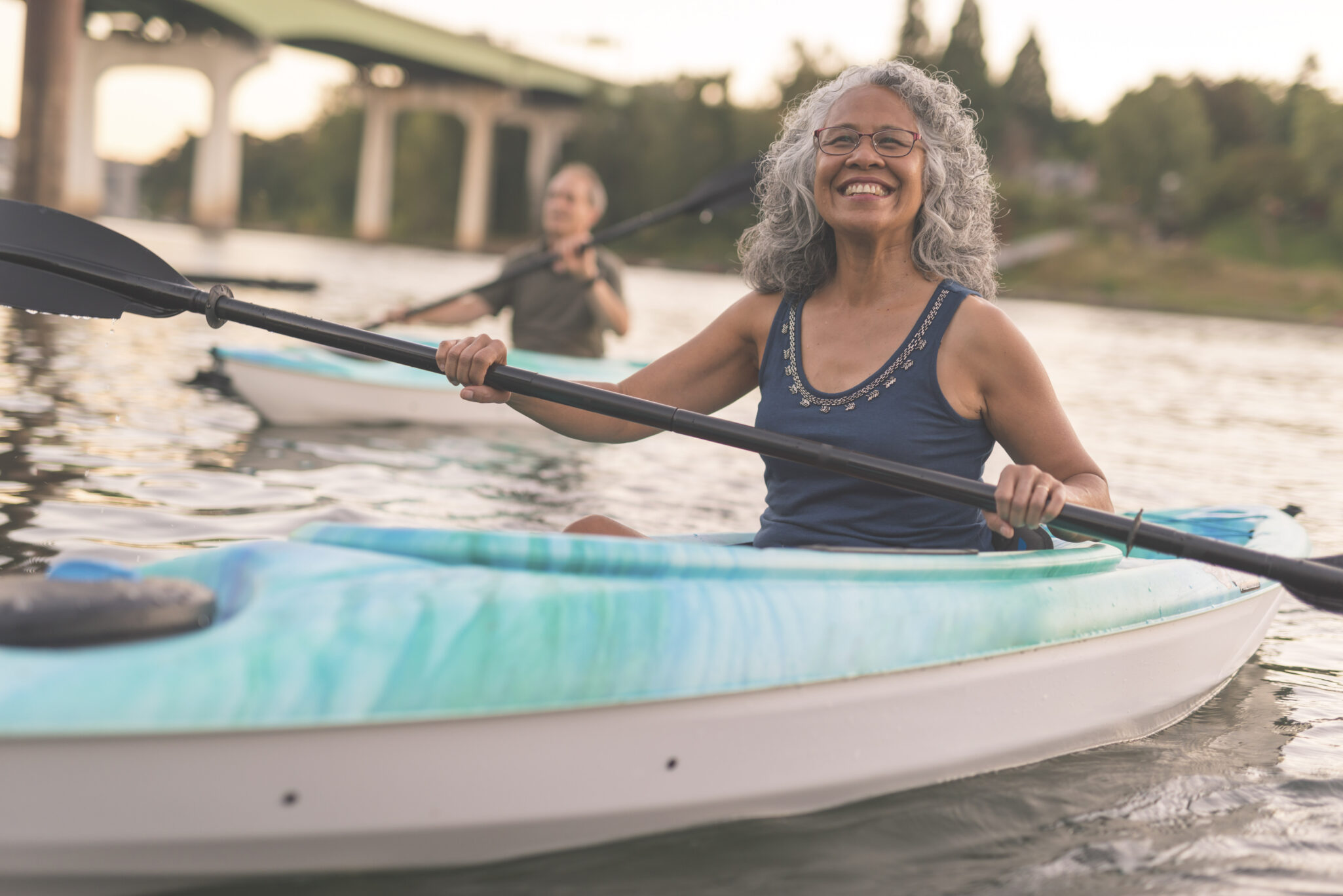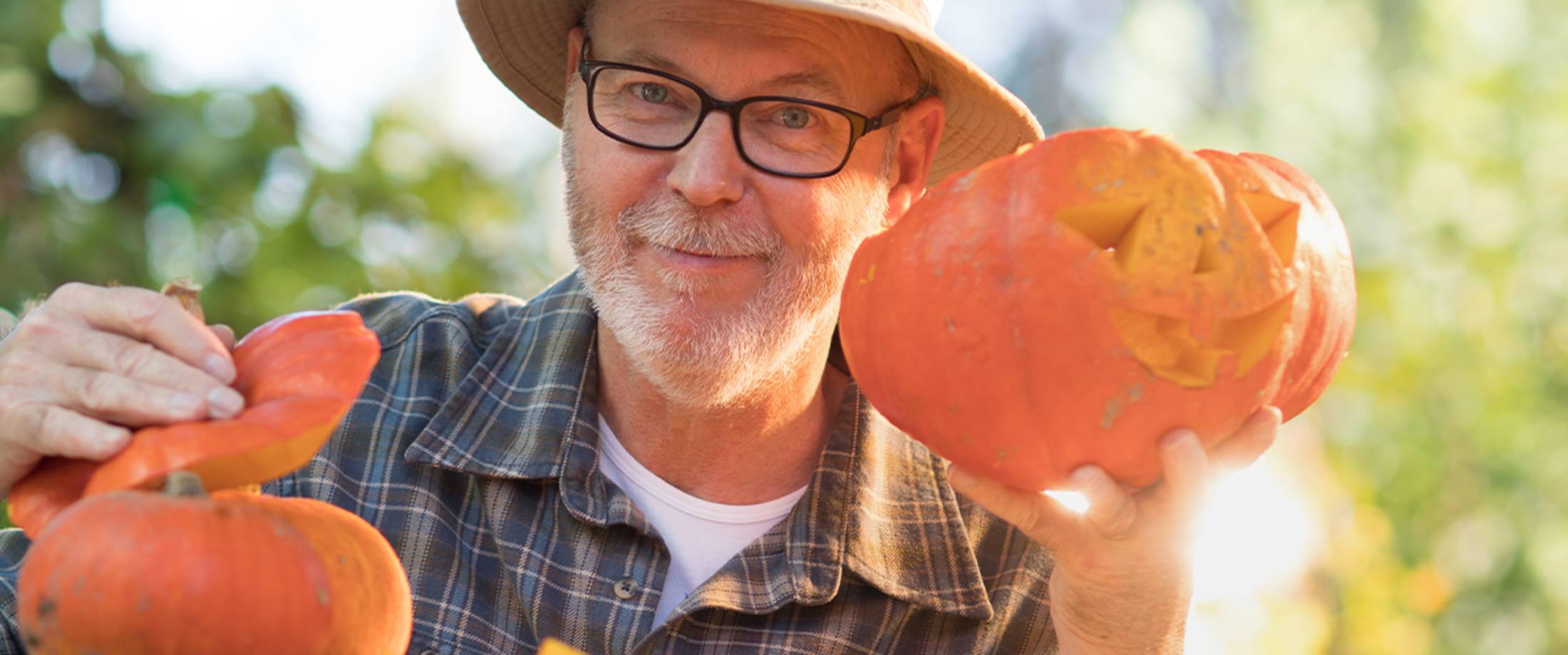Kayaking: A Great Low-Impact Exercises for Active Adults

If you’re looking for an exercise that’s easy on your joints, helps improve balance and strengthens your core, arms, shoulders and legs, kayaking could be a great option for you.
What Is Kayaking?
Kayaking uses a double-bladed oar to paddle a small boat called a kayak. There are many different kayaks — sit-on-top kayaks, recreational kayaks, inflatable kayaks, fishing kayaks, whitewater kayaks, tandem kayaks and more. Each one is designed for the kind of kayaking activity you’d like to do. While most kayaks can only accommodate one person, some options can hold two or three people and even pets.
Health Benefits of Kayaking
Reach your ideal body weight
If losing weight is one of your goals, kayaking is a low-impact exercise that can help. If you paddle at an average of 5 mph, you could burn almost 500 calories an hour and you get to be surrounded by the beauty of nature. Most people kayak for an entire afternoon, so you could burn up to 1,600 calories per kayaking session.
Increase upper body strength
Since kayaking uses mostly your upper body, paddling for hours helps effectively exercise your arms, back, shoulders and chest. Kayaking for a mile takes about 500 strokes, so it’s easy to see how this amount of work could help improve your upper body strength.
Tone your legs
While most of the focus is on your upper body, your lower body is used just as much. That’s because you use your legs to apply the needed pressure to keep you balanced on the kayak. Also, when you are trying to turn or maneuver, you’ll tighten and loosen your leg muscles countless times.
Strengthen your core muscles
One of the reasons kayaking is a great low-impact exercise for seniors is its focus on core strength. Reaching forward with every stroke, you’ll be contracting your abs. While you pull, the muscles in the lower back will contract. When you make any twisting motion, you’ll engage your obliques. Also, the most effective way to balance a kayak is by sitting upright which keeps your core muscles slightly engaged. Having strong core muscles is important for maintaining balance and preventing falls. According to the Centers for Disease Control and Prevention, in 2020, emergency departments recorded three million visits for older adult falls which resulted in over 36,000 deaths, making it their leading cause of injury death. Older adult falls also total to $50 billion in medical costs each year.
Improve your endurance
Doing moderately intense exercises, like kayaking, at least three times a week can increase your energy levels by 20%.
Improve heart health
Kayaking is an aerobic exercise that strengthens your heart muscle and improves its efficiency in pumping blood. It also improves circulation efficiency and increases the total amount of red blood cells in the body. If you kayak regularly, you’ll make your heart more robust.
Kayaking For Beginners
In the beginning, it’s best to start on a body of water that is sheltered from the wind and does not have large waves so you can more easily maneuver. You might also want to read up on how to get in a kayak and properly paddle. While it may seem simple, understanding proper form and techniques could be a lifesaver. Here’s a checklist of the equipment and items you’ll need to bring with you on your first outing:
- Kayak
- Two paddles, one being a spare
- Floatation device such as a life vest or jacket
- Helmet
- Bilge pump
- Waterproof bag for dry clothes and your mobile phone
- Sprayskirt, a cover that helps to keep water out of your kayak
- Headlamp, together with spare batteries
- Whistle
- First aid kit
- Repair kit
- Drinkable water
- A small pack of high-energy foods
General Tips For Beginners
- Join a club: The best way to learn how to paddle is to join a local club. While it’s possible to learn a lot by reading, lessons will improve your technique, reduce your risk of injuries and help you become more aware of safety issues.
- Be a competent swimmer: Since paddling involves the occasional tip into the water, make sure you are a competent swimmer. If necessary, brush up on your swimming technique.
- Try before you buy: Kayaking can be an expensive hobby. Consider borrowing or renting equipment at first until you’re sure you enjoy it enough to pay for a full kit.
Enjoy An Active Lifestyle Built Around Your Interests
Love the water? Then you’ll enjoy living at Lake Port Square with kayaking opportunities all around. Some of our favorite nearby places to visit include Bourlay Historic Nature Park, Flat Island Preserve, Lake Griffin State Park, Palatlakaha Environmental and Agricultural Reserve Park and Lake Idamere Park.



